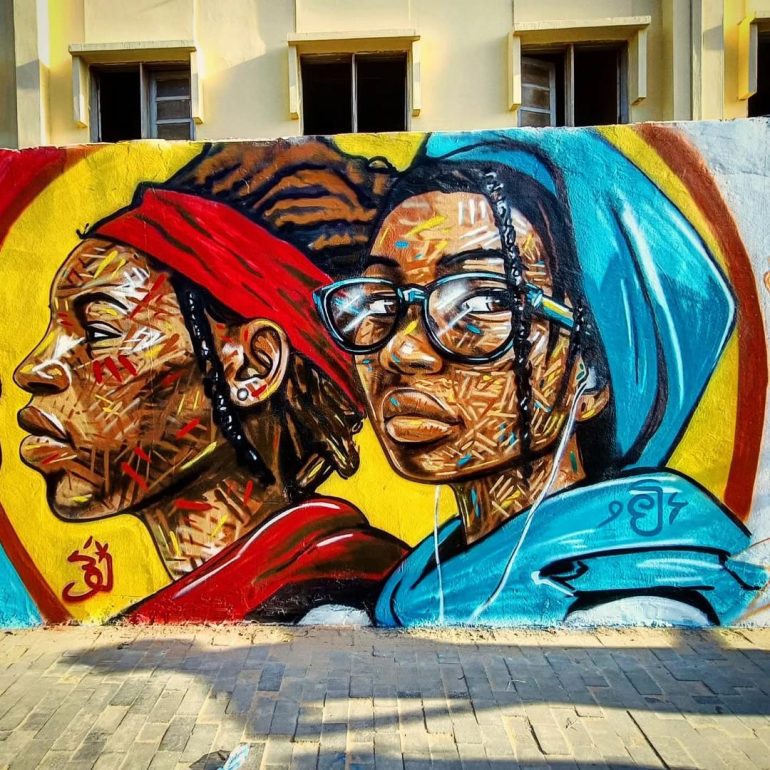Paraguayan-American artist Nathaniel Antonio Ovelar, better known as Cecê Nobre, has built an international career connecting cultures through vivid works inspired by Guaraní spirituality and Latin American identity. Born in the United States to an American mother and a Paraguayan father, he transformed questions about heritage into a visual language celebrating belonging and diversity.
Nobre’s art merges influences from Paraguay and Brazil with modern techniques, carrying the essence of his roots to audiences worldwide. His paintings explore identity, connection and the search for harmony.
Discovering Paraguay
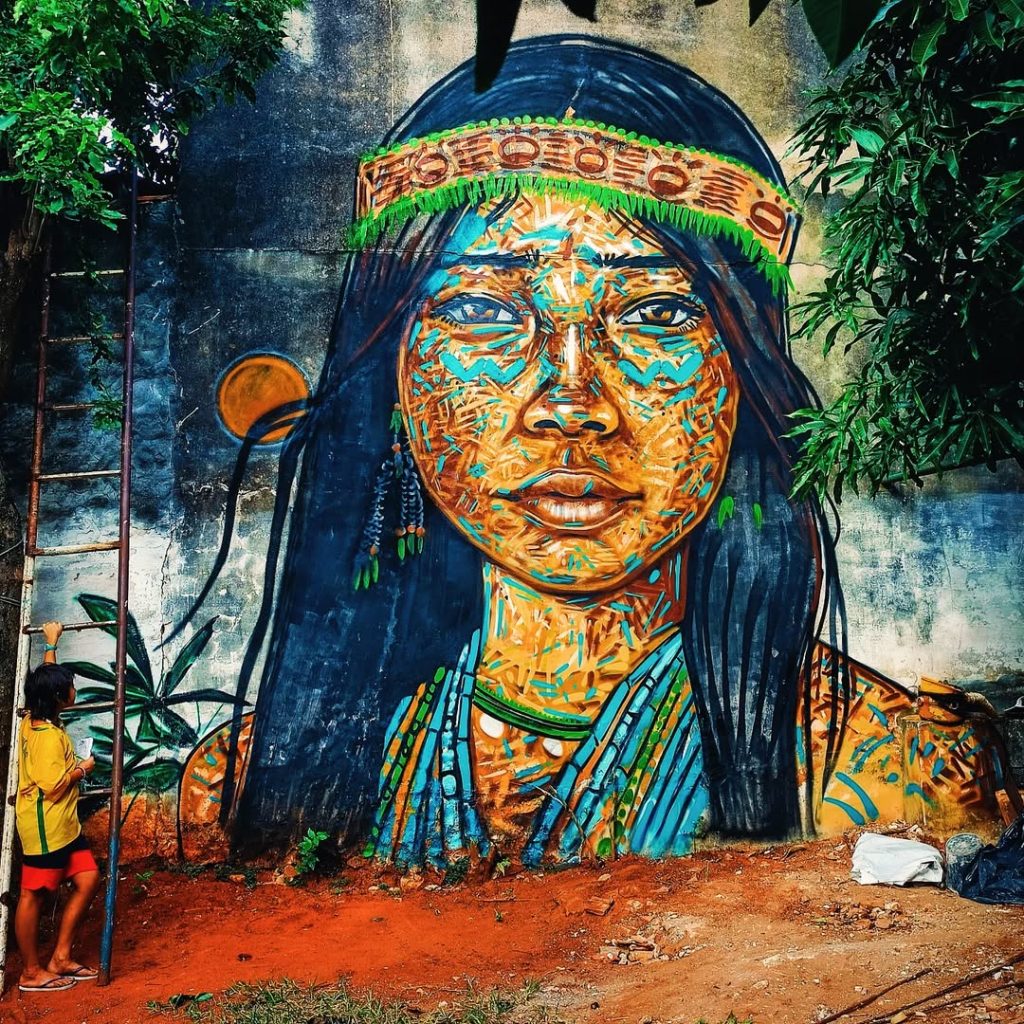
Nobre grew up in Missouri, far from the country that would later define him. “It was not an ideal place for a half-Paraguayan to grow up,” he says. “There were no other Latinos around, so I was just trying to learn what it meant to be Latino.”
His mother, though she had never lived in Paraguay, encouraged him to stay connected to his Latin heritage through Brazilian culture – its music, art and language. He grew up speaking Portuguese and surrounded by Brazilian influences.
“I started to learn about it and care about it more than I probably would have if I would have grown up in Paraguay, where everyone is Latino.”
That curiosity soon led him to explore his Guaraní roots and the broader history of Latin America. “Paraguay has a lot to offer; there is so much to discover there.”
Finding himself in Asunción
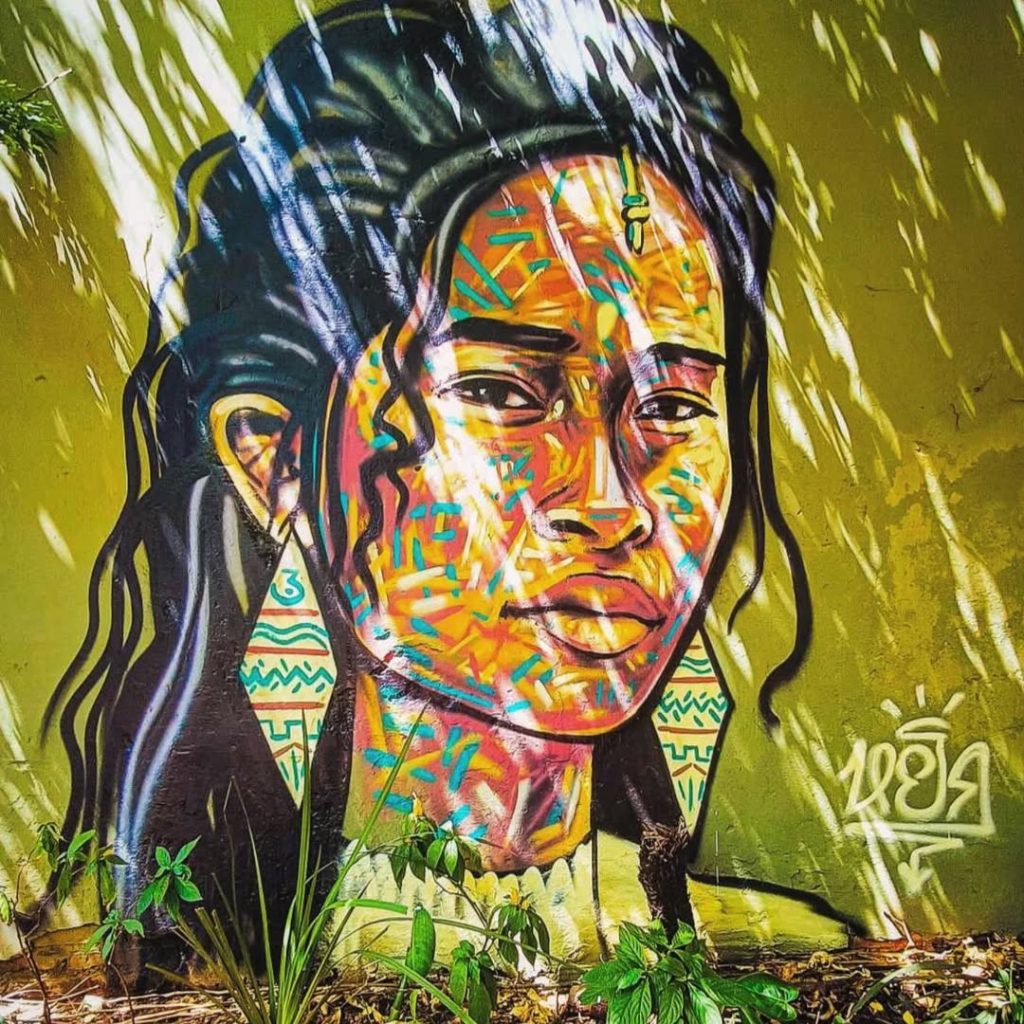
At seventeen, Nobre visited Paraguay for the first time — an experience that changed him. He later returned to the United States for university, but, as he admits, “my mind never truly left.”
After graduating, he moved back permanently. “Within a week, I was already back,” he laughs. Those years in Asunción shaped both his identity, and his career.
With only a part-time job teaching English, he used his free time to experiment with painting – something he had long admired but never tried. “It was really hard, really expensive to buy canvas in Asunción at that time,” he remembers. “So I would buy metres of thick cotton from textile shops and small tubs of paint from hardware stores. I would clear a space on the floor, and start painting right there.”
He began by decorating his own walls with leaves, flowers and trees, then moved to portraits and wood panels. “People probably thought I was crazy,” he says, smiling. “But I painted a lot. Those lines I was doing, connected to indigenous culture – they are still in my work today. They have evolved, but they are still my signature.”
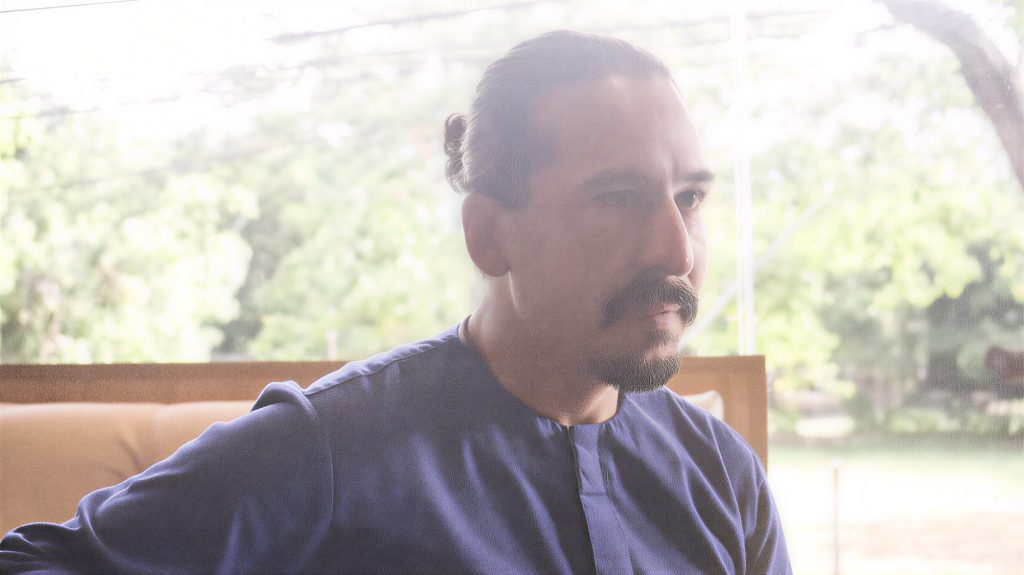
The Guaraní connection
His search for meaning deepened when his grandfather’s sister introduced him to Guaraní language and spirituality. She shared stories about Ñandutí, a traditional lace resembling a spider’s web, and the Guaraní belief that everyone is a fragment of God, that wisdom can come from anyone.
“That idea really stayed with me, you need to be open to everyone because wisdom can come from anyone.”
She also told him about Yvy Marã’ỹ, the mythical “land without evil,” a place of spiritual purity. “I loved that story, maybe it is not a real place – maybe it is something inside us. But I thought, what if it were real? What if there really was a land like that?”
Creating Kilombu
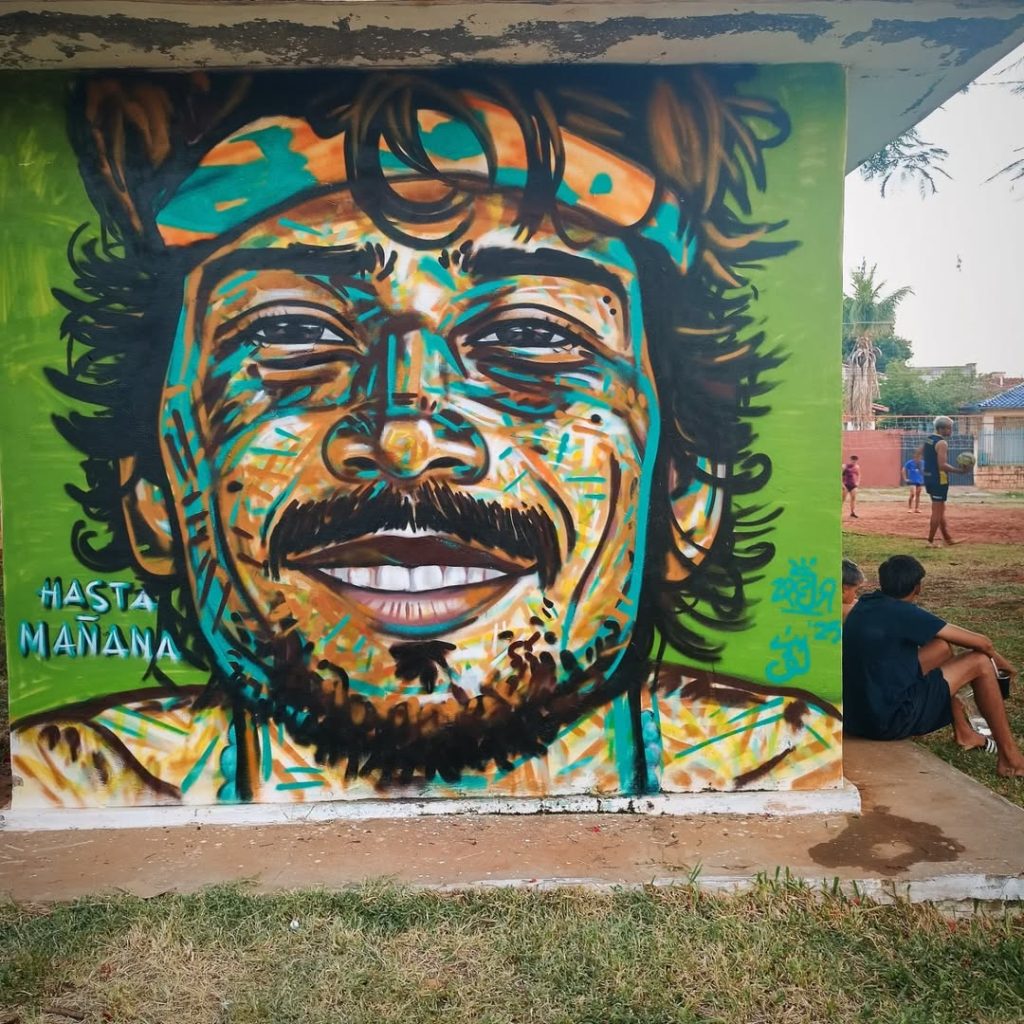
Inspired by those stories, Nobre created Kilombu, an imagined world where cultures blend freely – influenced by Brazil’s Quilombos (communities of escaped enslaved people) and the Guaraní vision of a “land without evil.”
“I imagined a place where everyone could belong – a culture that is mixed but without oppression,” he explains. Shaped by his life across Paraguay, Brazil, Thailand and Senegal, Kilombu became a symbol of unity and resilience.
To anchor it in his heritage, Nobre designed an alphabet partly based on Guaraní, placing Paraguay at its centre. “I wanted to highlight the Guaraní, if people see it at the heart of my work, they will start asking questions – and they will learn about Paraguay.”
A global artist with Paraguayan roots
Today, Cecê Nobre continues to paint and exhibit internationally, each piece reflecting fragments of his Paraguayan identity. What began as a personal search for belonging has become a bridge between cultures.
“Paraguay became the country where I developed my identity as an adult,” he reflects, “but also my entire career as an artist.”
To explote more of his world and imagination, visit Nobre’s website.

